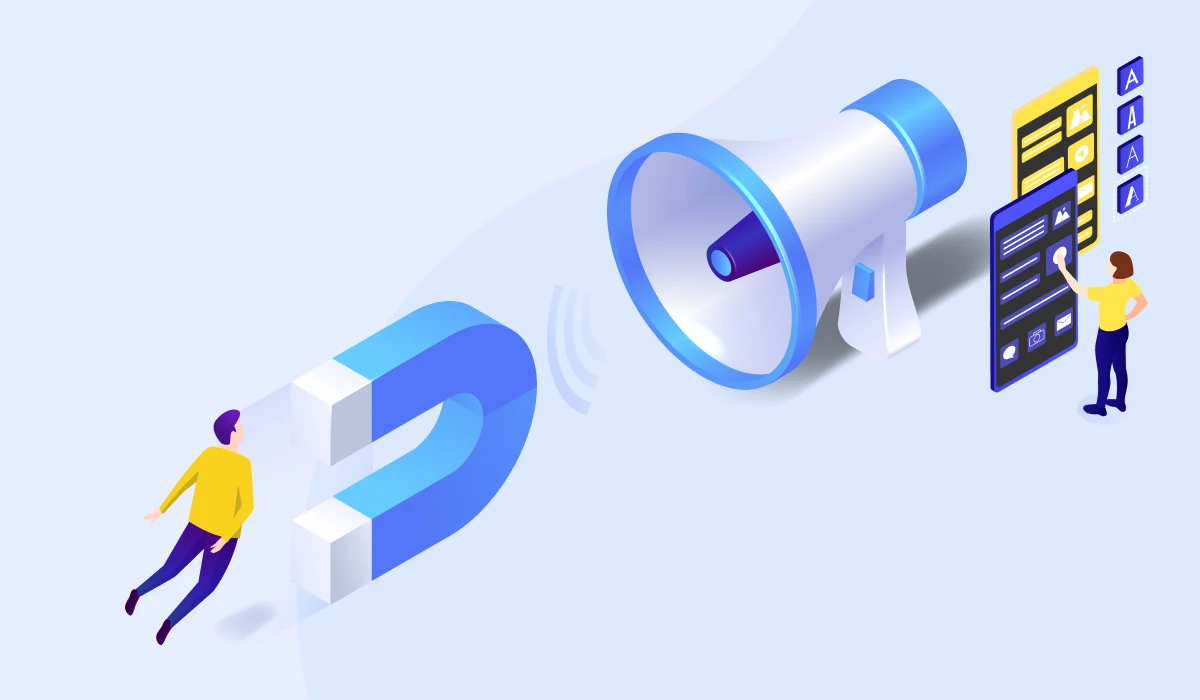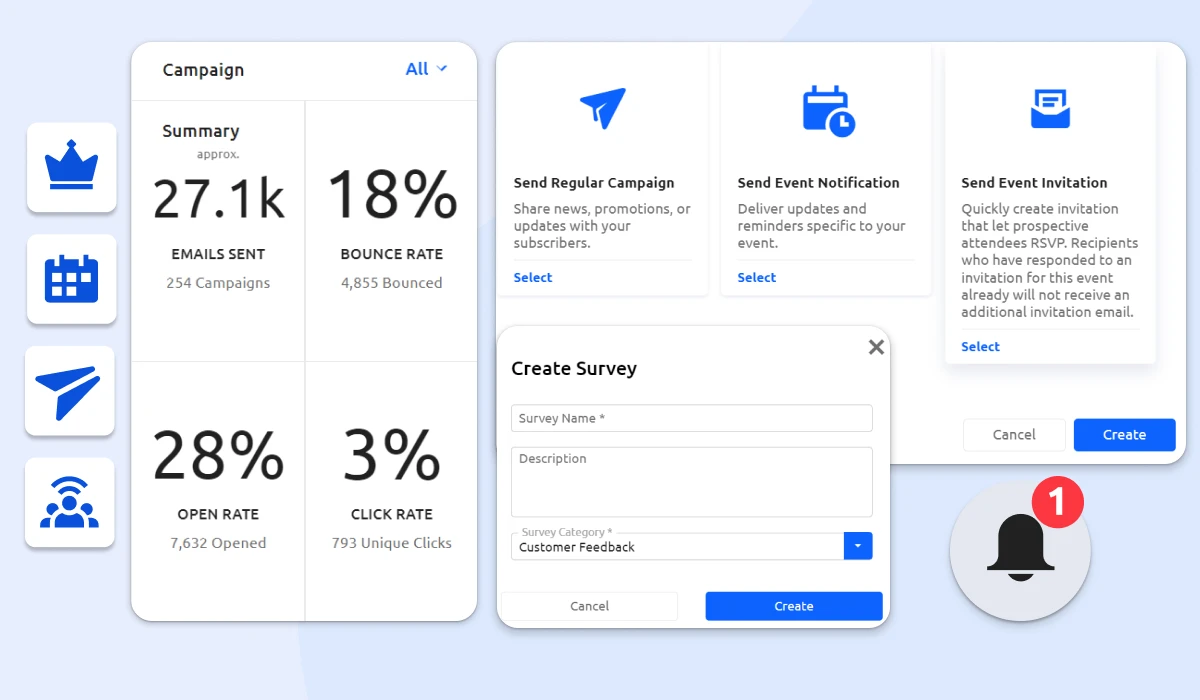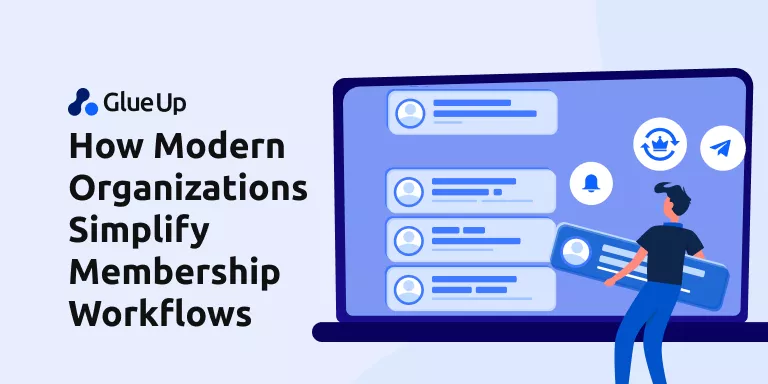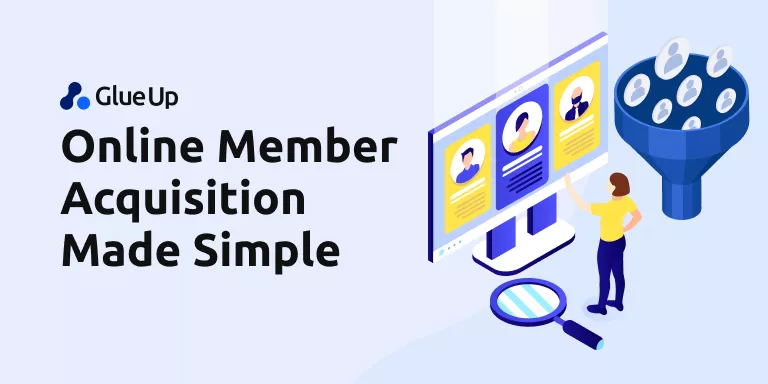
Turning an attendee into a loyal member is a powerful achievement. An attendee journey map leads the way to visualize and optimize every touchpoint a participant encounters, from their initial engagement to becoming a committed member.
Mapping out this journey helps organizations identify key opportunities to improve interactions, address pain points, and tailor their approach to meet their audience's needs and expectations.
This blog explores how an attendee journey map can improve your approach to membership growth. It covers creating an effective journey map, refining attendee experiences, and providing strategies to convert participants into long-term members.
However, improving your event strategy or strengthening your membership program starts with understanding the attendees’ journey. Read on to discover how to implement these strategies and achieve your membership goals.
Key Takeaways
- An attendee journey map visualizes the entire participant experience from initial contact through post-event follow-up, helping organizations improve interactions at each stage.
- Key stages include Awareness, Consideration, Registration and Onboarding, Engagement During the Event, and Post-Event Follow-Up, each requiring tailored strategies.
- Identifying key touchpoints and mapping attendee emotions and expectations are crucial steps in developing an actionable attendee journey map.
- Use the journey map to identify conversion opportunities, personalize communication, and measure success to refine strategies.
- Glue Up provides features for comprehensive event planning, effective promotion, enhanced engagement, and robust networking, ensuring seamless execution of your attendee journey map.
What is an Attendee Journey Map?
The purpose of creating an attendee journey map is to gain insights into the attendee’s experience, identify opportunities for improvement, and enhance overall engagement. Visualizing the journey can help organizations pinpoint areas where attendees may encounter obstacles or have unmet needs.
This understanding allows for the optimization of touchpoints, leading to a more seamless and satisfying experience, which can ultimately drive membership growth and loyalty.
The Key Stages of an Attendee Journey

There are multiple stages in the attendee journey, each crucial for shaping the overall experience.
Let’s explore these stages in detail:
Awareness Stage
The awareness stage is where potential attendees first learn about your event or organization. This is often through marketing efforts such as social media, email campaigns, or word of mouth.
At this stage, the goal is to attract interest and make a positive impression, verifying that the information about your event reaches the right audience. Notably, only 19% of buyers want to connect with a salesperson during the awareness stage when they’re first learning about the product. It’s better to let them learn about your organization and make the best possible impression.
Consideration Stage
During the consideration stage, potential attendees evaluate whether to participate in your event or join your organization. They may compare your offering with others, review details, and seek more information. Effective communication and providing clear, compelling information are important in this stage to help potential members see the value of joining.
Given that 42% of sales leaders struggle to establish urgency in the sales process, compelling communication becomes even more essential to address potential delays and encourage timely decision-making.
Registration and Onboarding
Once an attendee decides to participate, they move into the registration and onboarding stage. This involves signing up for the event or membership and receiving initial instructions and information.
Streamlining the registration process and ensuring a smooth onboarding experience can help create a positive first impression and set the stage for future engagement.
Engagement During the Event
Engagement during the event is important for maintaining interest and building a connection with attendees. This stage includes interactions such as attending sessions, networking with peers, and participating in activities.
Since 53% of event professionals report that attendees seek greater interaction with speakers, providing valuable content, facilitating networking opportunities, and maintaining a high level of engagement can greatly improve the attendee's experience.
Post-Event Follow-Up
The post-event follow-up stage involves maintaining contact with attendees after the event has concluded. This includes sending thank-you messages, gathering feedback, and providing additional resources or opportunities for further engagement.
Timely follow-up helps reinforce the positive experiences of the event, address any issues, and encourage attendees to become long-term members. Surprisingly, 75% of leads are never followed up with after an exhibition, making it essential to maintain contact and capitalize on post-event opportunities.
How to Create an Effective Attendee Journey Map
Creating an effective attendee journey map involves several key steps to make sure you capture a comprehensive view of the attendee experience. Moreover, the process helps you understand how attendees interact with your organization at various stages and how you can improve their overall experience.
Identifying Key Touchpoints
Start by identifying all key touchpoints where attendees interact with your organization. These touchpoints include initial interactions like marketing emails, registration processes, event sessions, and post-event communications.
Mapping these touchpoints lets you gain a clear view of the attendee experience from their first contact to their ongoing interactions, allowing you to address potential gaps and enhance engagement throughout their journey.
Mapping Attendee Emotions and Expectations
Next, focus on mapping attendees' emotions and expectations at each stage of their journey. Consider how attendees might feel during different phases, such as anticipation before the event or satisfaction after attending sessions.
Align these emotions with their expectations to verify that your organization can meet or exceed their needs. Understanding these aspects allows you to create a more personalized and engaging experience that resonates with your audience.
Tools and Techniques for Mapping

Map the attendee journey effectively using various tools and techniques. Digital tools like CRM systems and journey mapping software can help collect and analyze data on attendee interactions.
Additionally, qualitative methods such as surveys, interviews, and focus groups provide deeper insights into the attendee experience. Combining these tools and techniques will help you create a detailed and actionable journey map.
Using the Attendee Journey Map to Convert Participants into Members
Once you have developed your attendee journey map, use it to identify opportunities for converting participants into members. This process involves analyzing the journey to find strategic points where you can encourage further engagement and membership sign-ups.
Identifying Conversion Opportunities
Examine your journey map to identify key moments where you can promote membership conversion. Look for stages where attendees demonstrate high engagement or express interest in additional involvement.
Target these opportunities with tailored strategies, such as offering exclusive benefits or incentives that encourage attendees to become members.
Personalizing Communication and Offers

Leverage the insights gained from your journey map to personalize your communication and offers. Customize your messages and incentives based on the data collected about attendee preferences and behaviors.
Personalized communication increases the relevance of your offers and increases the likelihood of converting participants into long-term members.
Measuring Success and Iterating
Finally, continuously measure the success of your journey mapping efforts and be ready to make improvements. Track key metrics, such as conversion rates and engagement levels, to evaluate the effectiveness of your strategies.
Use this data to refine your approach, making adjustments as necessary to optimize the attendee experience and increase membership growth.
Refine the Attendee Journey and Secure Event Success with Glue Up

No matter how well-designed your attendee journey map is, a robust event management solution plays a central role in implementing that map. A solution like Glue Up guarantees that your attendees experience a seamless journey, providing a range of features designed to convert them from participants into long-term members.
Let’s explore these features and see how they can help you achieve event success and boost membership growth.
Comprehensive Event Planning and Execution
- Event Website Builder & Blueprints: Easily create a customized, professional event website using pre-designed templates and blueprints.
- Custom Registration Forms: Design registration forms tailored to your event's specific needs, capturing essential attendee information.
- Online Ticketing & Payments: Manage ticket sales and process payments seamlessly through an integrated online system.
- Multi-language Support: Cater to a diverse audience with support for multiple languages, ensuring accessibility for all participants.
Effective Promotion and Communication
- Branded Event Invitations: Send out visually appealing invitations that reflect your event's branding and make a lasting impression.
- Automated Notifications: Keep attendees informed with automated updates and reminders about important event details.
- Event Surveys: Gather valuable feedback through surveys to assess attendee satisfaction and identify areas for improvement.
- Social Media Integrations: Expand your event’s reach with seamless integration to various social media platforms for promotion and engagement.
Enhanced On-site and Online Engagement
- Built-in Ticket Scanner: Streamline event check-in with an efficient ticket scanning system, reducing wait times and improving the attendee experience.
- Live Engagement Analytics: Monitor real-time attendee interactions and engagement metrics to gauge event success and make data-driven decisions.
- Agenda, Maps, Bios: To enhance attendees' experience and provide easy access to event agendas, venue maps, and speaker bios.
- Event Documents: Share important event documents and materials with attendees, ensuring they have all the information they need.
Networking and Interaction Features
- Private & Public Groups: Facilitate networking with dedicated private and public groups for attendees to connect and collaborate.
- Media Sharing: Allow participants to share media, such as photos and videos, to enrich their event experience and interactions.
- 1-on-1 Direct Chat: Enable direct communication between attendees for personalized networking opportunities.
- Business Cards Exchange: Simplify the process of exchanging contact information with a digital business card feature.
Robust Support for Webinars
- Webinar Documents: Share and manage documents related to webinars, enhancing virtual event experiences and participant engagement.
Integrated Event Management Tools
- CRM: Utilize a powerful Customer Relationship Management system to manage attendee information and interactions.
- Email Campaigns: Execute targeted email campaigns to engage with attendees before, during, and after your event.
These features certify the execution of your attendee journey map is on point, delivering a seamless and impactful experience that drives membership growth.
However, you can book a demo to see how our features can transform your event strategy and help you achieve your membership goals.



